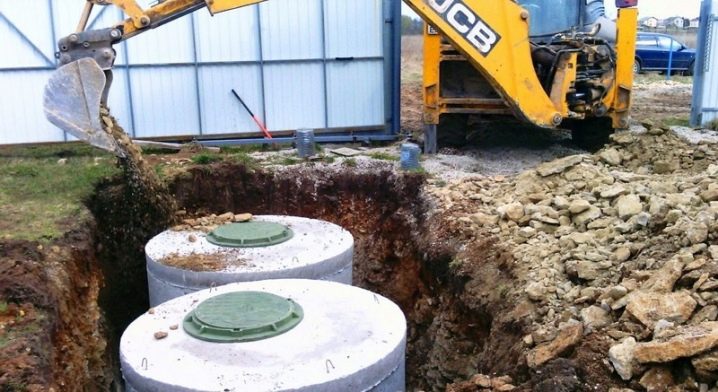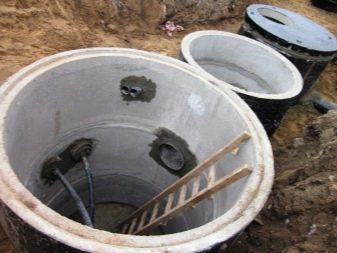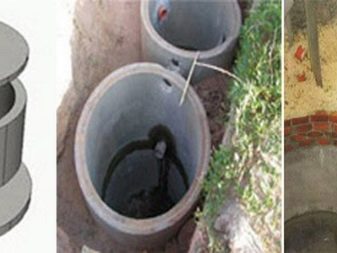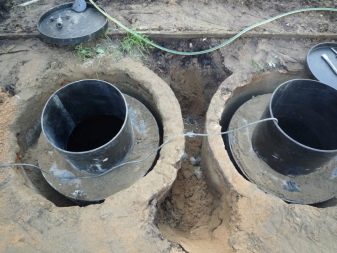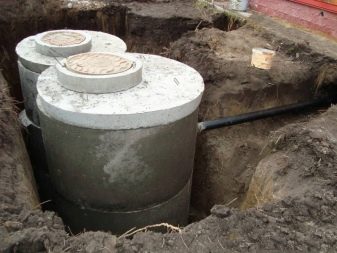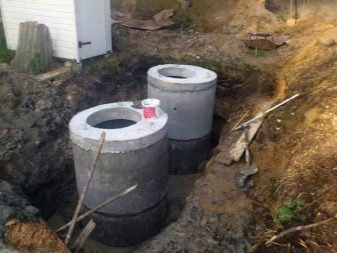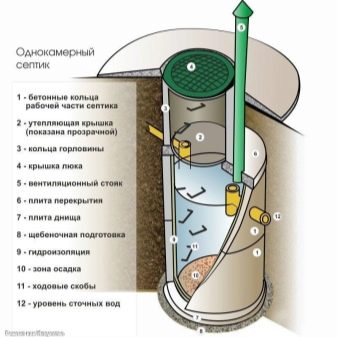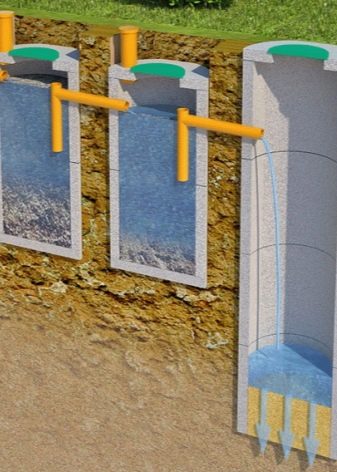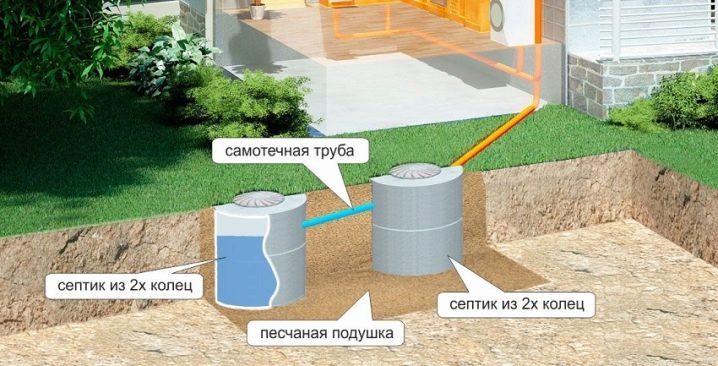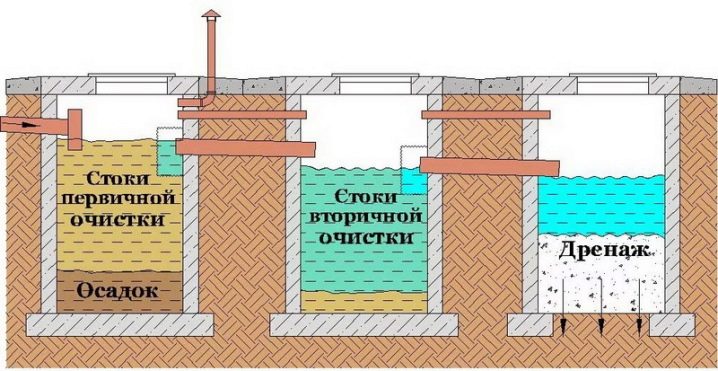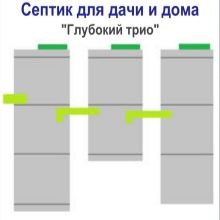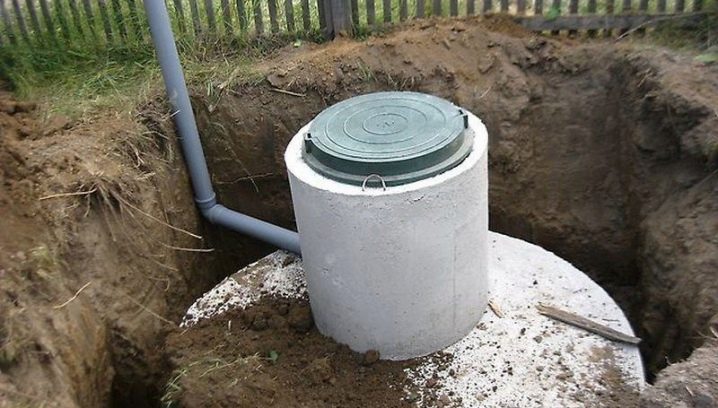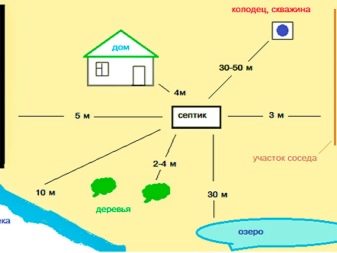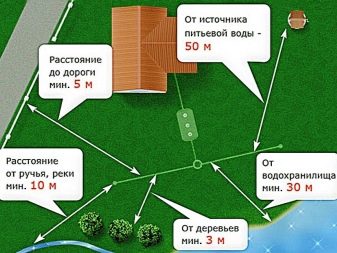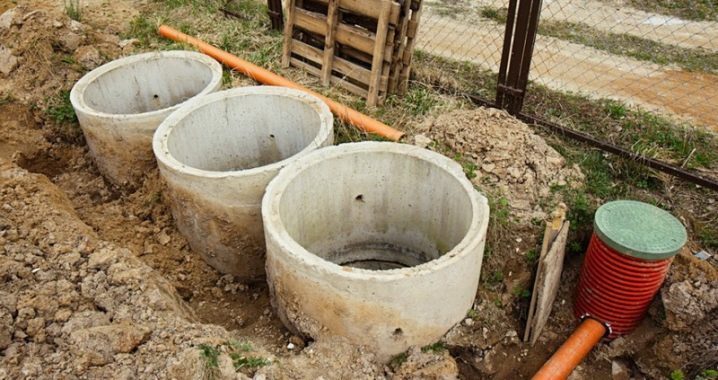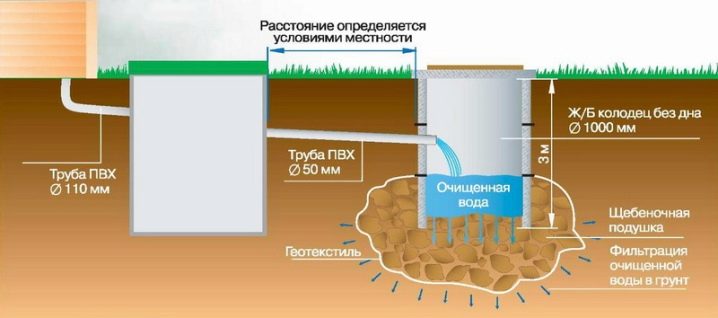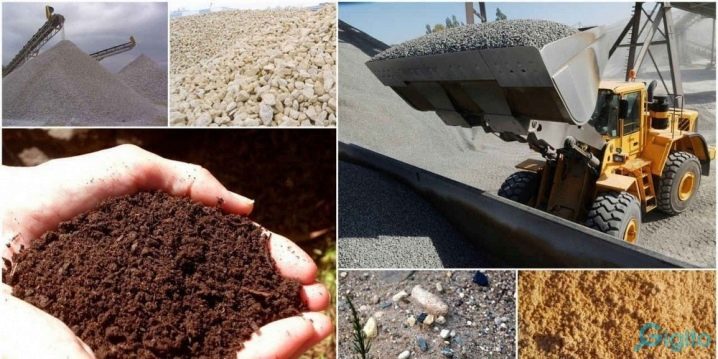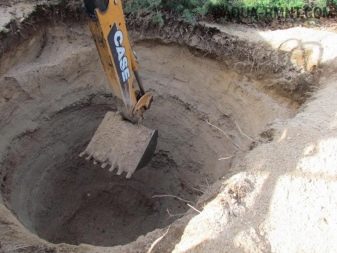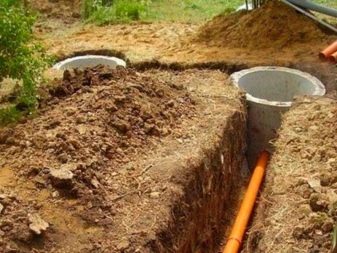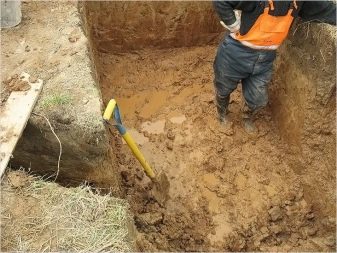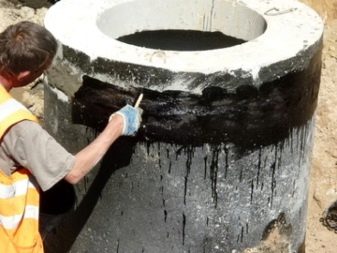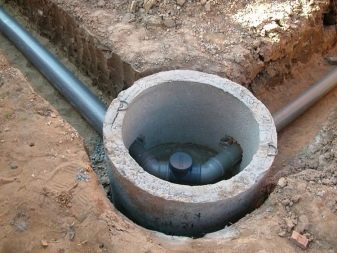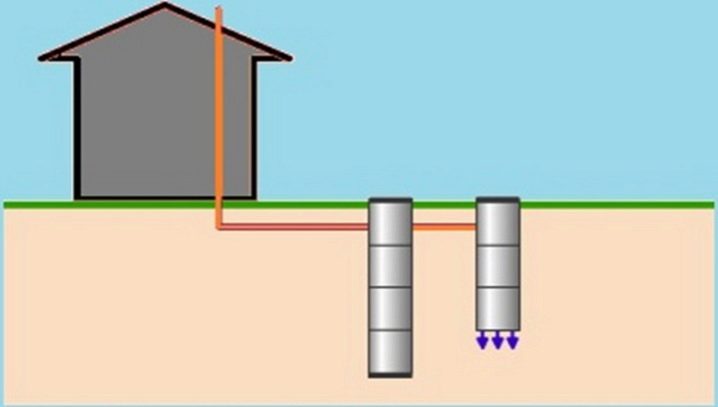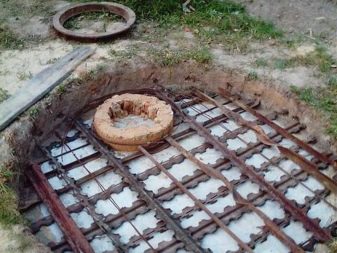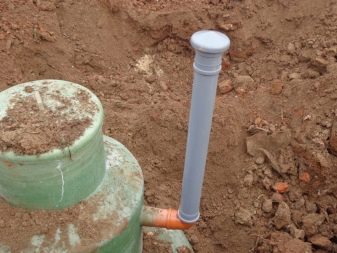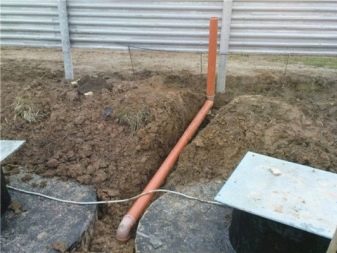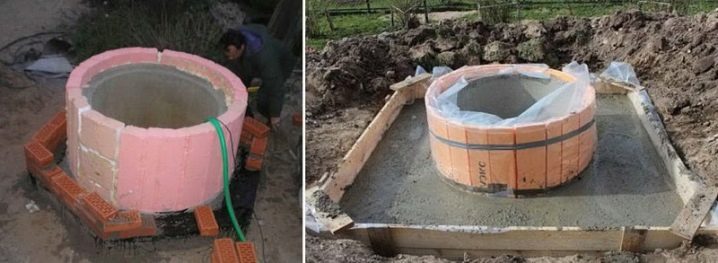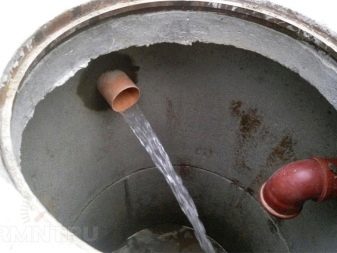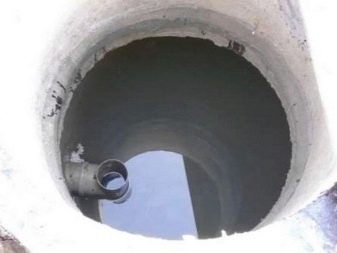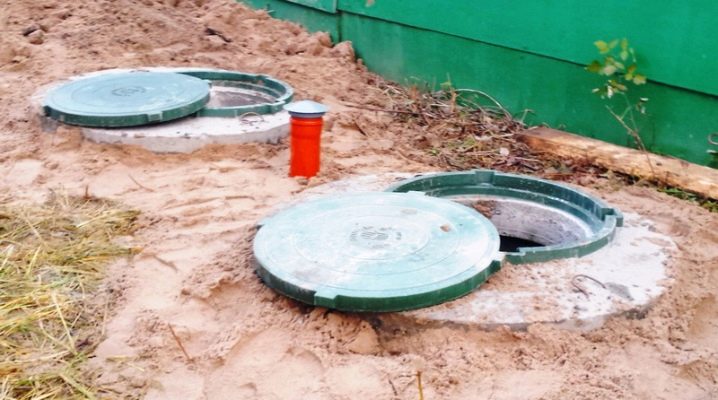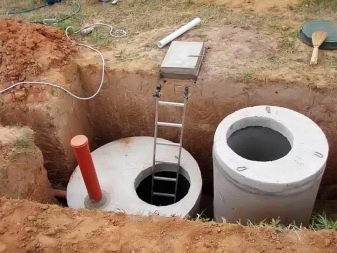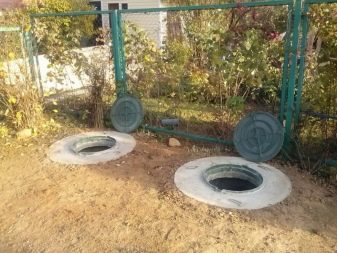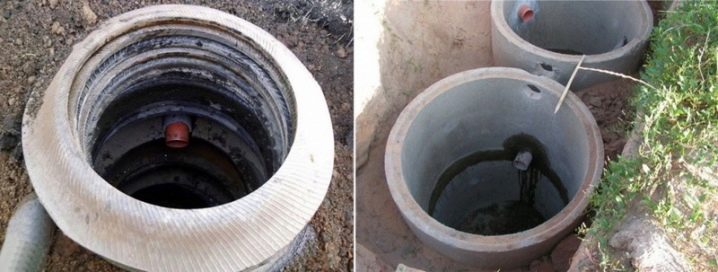Concrete ring septic tanks: design features and installation steps
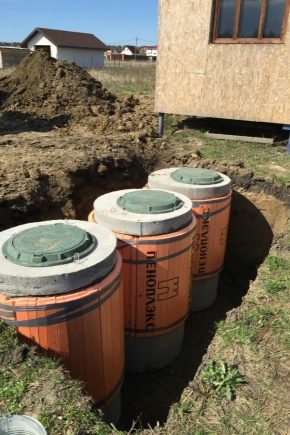
A septic tank made of concrete rings is a practical solution to the problem of withdrawing and processing sewage in private homes that do not have a connection to central communications. Its use has become widespread in the construction of autonomous treatment facilities for country cottages and summer cottages.
Specifications
Overflow concrete septic tank is a reservoir consisting of one, two or three compartment chambers. The number of sections depends on the expected volume of wastewater and the intensity of discharge, therefore it is calculated for each project individually.
For a country house with a large number of residents suitable three-chamber septic tankin which the first two tanks have a hermetic design, and the last one is equipped with a gravel bottom filter and serves to drain sewage into the ground.
- The role of the first compartment is to receive and defend polluted water. It is in it with the help of anaerobic bacteria that wastewater is separated into a liquid component and sediment. The bottom of the first compartment is tightly concreted. This eliminates the flow of contaminated fluid into the soil and prevents contamination of the site. The volume of the first chamber should be at least half the volume of the entire cleaning system.
- The second chamber is called drainage and is intended for additional filtration of effluent. To do this, additional filters are installed in the compartment, made of gravel-sand or gravel-gravel mixture. The bottom of the second chamber is also carefully concreted.
- To improve the quality of cleaning, the second compartment is often equipped with an aeration system. In the third compartment, the final purification of polluted water is carried out, which is possible due to the filtration system through the sand-gravel substrate.This chamber has no bottom, and the filtered liquid flows into the ground.
Two-chamber septic tank is the most common type of autonomous treatment facilities and it is a structure consisting of two wells with a height of 90 cm and a diameter of 70 to 200 cm. A variant of a well consisting of three rings with a diameter of one meter is considered optimal.
- The first section carries out reception and settling of dirty water and has a hermetic design. The intermediate link in the form of an aerator is absent here: the liquid from the sump immediately goes to the filtration to the second well, from which it passes through the sandy gravel filter system to the ground.
- The overflow of water between the tanks is carried out thanks to the transitional nozzle, which is at a certain height, and the water, having reached its level, begins to overflow into the second compartment.
Single-chamber septic tank is a storage tank, in which the cleaning and drainage of water is not performed. Contaminated liquid from such structures is pumped out independently with the help of drainage pumping equipment.
Advantages and disadvantages
The popularity of concrete septic tanks and a large number of positive reviews are due to a number of indisputable advantages of these structures:
- The availability of materials and simple design allow you to build a sewage treatment plant yourself.
- Operation does not require installation of drainage pumping equipment, which greatly simplifies use and significantly saves the budget.
- High mechanical strength and durability of concrete rings guarantee a long service life and overall reliability of the septic tank.
- Simplicity in service of two-and three-chamber models is caused by lack of need of regular pumping of liquid masses.
- Due to the large useful volume, the septic tank is suitable for permanent use as a main sewage system. The risk of overfilling and reverse scavenging of dirty masses is excluded.
- The walls of the tanks have a high resistance to aggressive sewage.
- The large weight of concrete rings ensures good structural stability and does not allow groundwater to displace it from the ground.
- Due to the frost-resistant properties of concrete products, rings can be used for arranging septic tanks in any climatic zone. However, in places with a sharp continental climate and in northern latitudes, additional thermal insulation of the pipeline system and reservoirs will be required.
The disadvantages of concrete septic tanks include the need to carefully seal the joints between the rings. It is also noted that it is impossible to use structures in the watered areas due to the increased hygroscopicity of concrete. The weight of the rings implies the use of construction equipment during their transportation and installation, which is also referred to as design disadvantages. In addition, single-chamber tanks need regular pumping of sewage, and multi-chamber - in periodic cleaning of the sump. Many users also note that in case of untimely care for a septic tank, it is possible to spread an unpleasant odor.
Volume calculation
Before proceeding to the acquisition of rings and installation, you should draw up a diagram and determine the number of chambers, the volume and size of the future structure. The number of sections is determined depending on the number of people living in the house and the intensity of their use of water supply. For a family of three, it will suffice to install a two-section model, however, if 4 or more people live in the house, then it is better to choose a three-section option. To accurately determine the volume of wastewater, it is necessary to calculate the average daily consumption.
If the water supply system is not equipped with metering devices, then you can use the average consumption rate, which is 200 liters per person per day. Based on this, for a family of four people, the capacity of the septic tank should be at least 800 liters per day.
When calculating it is necessary to take into account that the longer the drains are kept in the settling basins, the better their cleaning takes place. To increase the duration of stay of dirty waters in the first sections resort to an increase in their volume.
Considering the construction norms, the structure should contain a three-day volume of wastewater.
Based on standards, the installation of a single-chamber septic tank will be appropriate only if the total daily volume of wastewater does not exceed one cubic meter. The two-section model can handle the load of up to 5 cubes per day, while the three-chamber model is designed to receive and process 8 m3. The volume of the sump should occupy at least half of the total volume in the three-section model, and at least 2/3 in the septic tank, consisting of two sections.
Selection and preparation of the site
It is necessary to approach the choice of the place for installation of a septic tank very responsibly,taking into account sanitary standards, the possibility of unhindered access of aspenizatorsky equipment, the proximity of groundwater and their fluctuations in the seasons, the remoteness of finding the foundation of the house, the distance to the bath, garden and vegetable garden, the depth of soil freezing.
The septic tank should be installed above the level of groundwater at a distance of 7-20 meters from the house. To have the design further economically impractical. Moving the system to a greater distance will require more material, in addition, it increases the risk of breakage and leakage of sewer pipes due to the greater length.
The most optimal location for septic tanks is the border of the site and the street. Such placement provides convenient access for aspenizatorsky equipment, and no need for her to enter the courtyard. Also, you will not need to pull the hoses, which, when folded, can contaminate the beds and the yard with their contents. The distance from the treatment plant to the well or well is the most important criterion for determining the location. It should not be less than 30 meters.
Should take into account the terrain. It is not recommended to have a septic tank in pits and grooves.Such placement may lead to rain and melt water entering the structure. Sewage pipes must be located at a certain angle, while the pipeline itself must be made absolutely straight, avoiding corners and tie-ins.
Subtleties of installation
The main material for arranging septic tanks are concrete rings, which differ in height, diameter, wall thickness and brand of concrete. For the device of sedimentation tanks, it is necessary to purchase models that are more resistant to aggressive external influences, as well as products with low surface permeability.
The height of the rings varies from 29 to 90 cm. The most common and popular are models with a height of 0.9 m and a diameter of 90, 100, 150 and 200 cm. The price of rings varies from 1.2 to 1.8 thousand rubles and depends on the quality of concrete and sizes. The cost of low models ranges from 680 to 1050 rubles.
It should be remembered that the marking can indicate both the external and internal diameter of the ring, therefore, when choosing a lid, this nuance should be taken into account.
In addition to concrete products, the construction of a septic tank can not do without sand, gravel, cement, rubble, liquid glass, polymer or cast-iron hatches, perforator, pipes and fittings.
The total cost of treatment facilities varies from 38 to 70 thousand rubles and depends on the number of tanks, their height and the length of the pipeline, which, in turn, depends on the distance between the house and the treatment plant. When arranging a septic tank in areas with a cold climate and winter soil freezing, the costs will increase and will depend on the thickness of the heat insulation being formed.
Installation of the construction begins with digging a pit, the diameter of which must be no less than 30 cm above the diameter of the rings. Such a reserve is necessary for ease of installation and arrangement of waterproofing. After the completion of excavation and tamping of the walls and bottom of the pit, you can proceed to laying the rings.
Installation can be done in two ways: using a truck crane and manually.
The manual method is more laborious and time consuming. Its essence lies in the fact that having dug a shallow ditch and placing a ring there, the person carrying out the digging should carefully dig the soil under the ring from the inside and remove it to the top. After the first ring completely goes to the ground, the second ring is placed on top, and the excavation and excavation is continued. Gradually, the construction will go down under its weight.The instillation of the rings continues until the whole structure is lowered to the required depth.
Laying rings should be accompanied by high-quality sealing of the joints between them. The slots should be well lubricated with cement mortar. Otherwise, the contaminated liquid will sink into the ground and cause soil contamination. Waterproofing of the walls of wells is made on both sides with the help of special solutions for concrete products. The bottom of the first and second sedimentation tanks are concreted, and a bottom sand-gravel filter is formed in the filtration compartment.
Installed tanks are interconnected by pipes, and the places of their exit from the rings are tightly insulated using liquid rubber. The use of elastic sealant is necessary in order to eliminate the risk of damage to the pipeline during seasonal movements or shrinkage of the soil. The installation of sewage pipes running from the house to the septic tank is carried out under a slight slope: the height difference must be at least three centimeters per linear meter. This will promote the free flow of fluid and eliminate stagnation.
To determine the slope of the entire length of the pipeline at the design stage of sewage treatment plants, it is recommended to make a drawing in which the required number of meters of pipes and the angle at which they will be located will be accurately displayed. If the sewage treatment plant is supposed to be used in a cold climate, then it is recommended to make heat insulation of sewage pipes and overflow pipes. This will help avoid freezing of the liquid, prevent pipe rupture and the need for rework.
After laying all the rings, arranging waterproofing, installation of connecting pipes and sewer pipes, you should proceed to the formation of the floor. All tanks should have an airtight lid that will not allow the unpleasant smell to spread over the area. As such a cover often use a concrete slab with holes for the hatches.
If it is not possible to purchase the finished product, it is possible to form a skeleton of the ceiling from the reinforcement and pour it with a solution. It should be borne in mind that the independent production of the top cover requires the presence of building skills and additional time.From above, the lid is covered with earth, and hatches are made of cast iron or highly durable plastic.
When building a septic tank with your own hands, you should remember about the device of exhaust ventilation. For its arrangement, a high pipe is installed in the floor slab, which will guarantee the absence of unpleasant odors on the site. The height of the ventilation pipe must be at least four meters.
When installing a septic tank in the soil with a high aquifer, you should take the necessary measures to protect the integrity of the structure. For this it is necessary to increase the overall strength of the structure. It is recommended to fasten the rings with the help of metal screeds, and when installing to form an additional sand-gravel pillow, placing it around the tanks. These measures will help reduce the drawdown of the structure and improve its thermal insulation.
After completion of the installation work should be run septic tank. To do this, it is necessary to saturate it with anaerobic bacteria, which will continue to process contaminated waste. There are two ways to fill the septic tank.The first is to fill the tanks with dirty water and then settle it for two weeks. Afterwards, several buckets of sludge sludge are poured into the settling tank from the existing septic tank, the exact amount of which is calculated independently and is about two buckets per cubic meter of liquid.
The second method is simpler, it consists in filling the settling tank with a ready-made solution, consisting of strains of anaerobic bacteria. You can buy the composition in specialized stores of household chemicals.
At purchase it is necessary to pay attention that for this type of treatment facilities only anaerobes are used. Means with aerobic microflora are not suitable.
Service
To ensure proper operation of the septic tank, it is necessary to control the level of effluent, to regularly pump the liquid and to clean the septic tanks. At least twice a year, after the winter cold and summer rains, you should inspect the tightness of the connection of pipes and inter-ring seams and check the integrity of the ventilation.
Cleaning the pipeline is recommended annually. Bottom fats are removed every 2-3 years, while part of the sludge is left to restore microflora after cleaning.It is also necessary to monitor the amount of sludge in the settling tanks: its share should not exceed 25% of the total volume of the tank.
In order to determine the effectiveness of a homemade septic tank, an analysis of the effluent leaving the last filtration chamber should be carried out.
The system is considered to function properly if the effluent is cleaned by at least 70% of its original state. A lower cleaning rate indicates a malfunction of the drainage system and a poor condition of the bottom filters.
When inspecting, repairing and maintaining a septic tank, you should observe safety precautions. It must be remembered that gases generated in septic tanks inhabited by anaerobic microflora can be dangerous to humans. Before carrying out any work inside the wells, the tanks should be well ventilated, and when going down inside it is necessary to use safety harnesses, face masks and respirators.
A septic tank of concrete rings is the simplest solution to the problem of cleaning and disposal of liquid waste.
The demand for the system is explained by the availability of installation and the possibility of its use in any climatic zone.A low cost and ease of maintenance made the concrete structure the most popular type of device autonomous treatment facilities.
On how to install a septic tank of concrete rings, see the following video.
